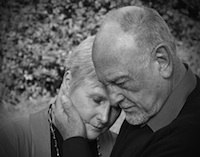
It’s a far cry from life as a child and falling over seemingly countless numbers of times a day. Adult falls can result in serious injury, hospitalization, immense pain, and even death. Falls are taken so seriously that some smart watches are programmed to detect when the wearer has fallen and automatically contact emergency services unless the wearer specifically indicates that they are ok. While we may get a chuckle out of a toddler stumbling through a few steps and then falling over, an adult fall is generally cause for immediate concern and urgent action.
According to the Mayo Clinic, your odds of falling as an adult actually increase as you age. It is truly a double-edged sword. Not only does a fall have a greater impact and increased risk to you, but you’re also more likely to do it! Mayo Clinic statistics indicate that falls are actually a leading cause of injury among older American adults.
Much is written from many leading authoritative sources about falls and what can be done to prevent them. Everyone from the Mayo Clinic to the National Institute on Aging has dedicated significant resources to studying the causes of falls and using that information to try to prevent them. Using information to understand one’s own risk for a fall, be it from medication, environmental factors, existing health conditions, and even the types of shoes one wears can all be brought together to create risk profiles that can significantly mitigate those factors and decrease the likelihood of a fall.
In many cases, we can look back at a fall and say, “if only…” Taking preventative measures up front can reduce those cases and help older adults continue to lead healthy and satisfying lives.
